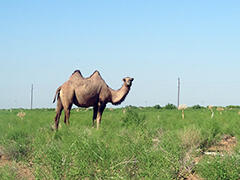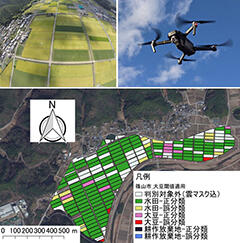Achieve sustainable agriculture through active use of real-time data and halophytes!
ODA Recipient Country
Republic of Uzbekistan
Research Institutions in Japan
Kyoto University / Kobe University / Chiba University / Mie University / The University of Kitakyushu/Tottori University
Research Institutions in Counterpart Country
International Innovation Center for Aral Sea Basin / Uzbek Hydrometeorology Institute / Tashkent Institute of Irrigation and Agricultural Mechanization Engineers / National University of Uzbekistan / Uzbek Design Research Institute / Nukus Branch of Tashkent Agrarian University
Adoption fiscal year
FY 2020
Research Period
5 Years
Overview of the Research Project
Selection of crops for circular halophytes mixed farming (CHMF) and utilization of real-time dataYears of irrigation-based agriculture have shrunk the Aral Sea, and salt damage and drought are becoming increasingly severe in the surrounding area. This project is designed to use climate data and information from earth observation satellites to grasp conditions in the area around the Aral Sea: the amount of usable water resources, the amount of evapotranspiration, and the status of crop growth. In addition, we will work to prevent the worsening of salinity problems by developing a sustainable agricultural model that combines appropriate irrigation drainage management methods, halophyte-based biological restoration of saline soil, and cultivation of crop species that use water efficiently.
Development of a circular business model for managing agricultural land, water, and saltWe will explore and propose optimal combinations of crop species from the standpoints of resistance to drought and salt, ability to remove salt from soil, and efficient use of water, in order to realize resource-efficient, sustainable agriculture through irrigation and drainage management based on the amount of water resources available, the amount of evapotranspiration taking place and the status of crop growth, and through active cultivation of halophytes in salinity-affected areas.
Photo gallery
Japan Science and Technology Agency (JST) Department of International Affairs (SATREPS Group)
































